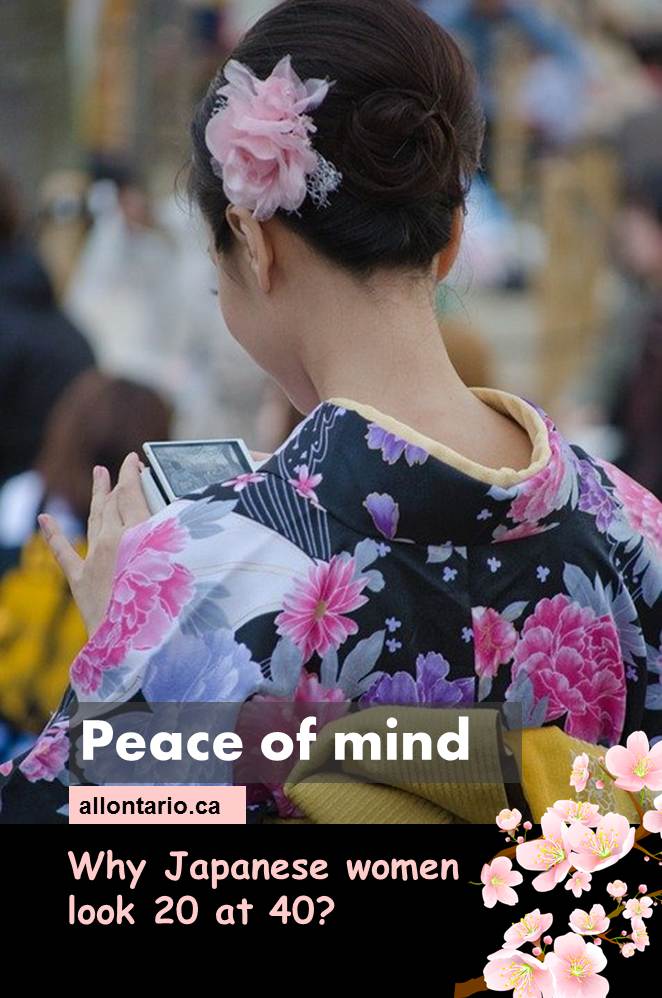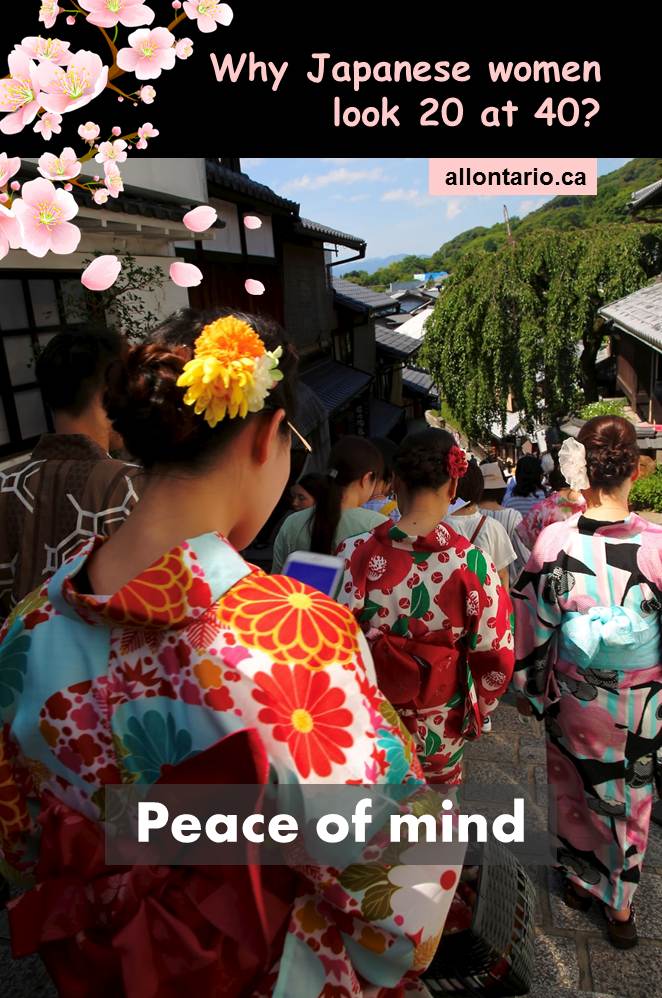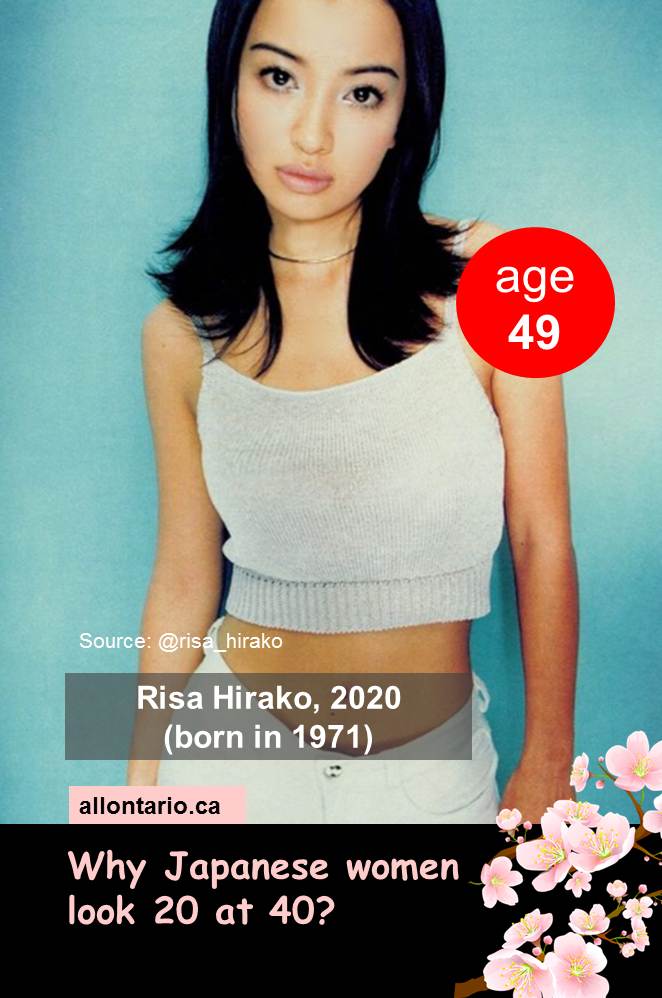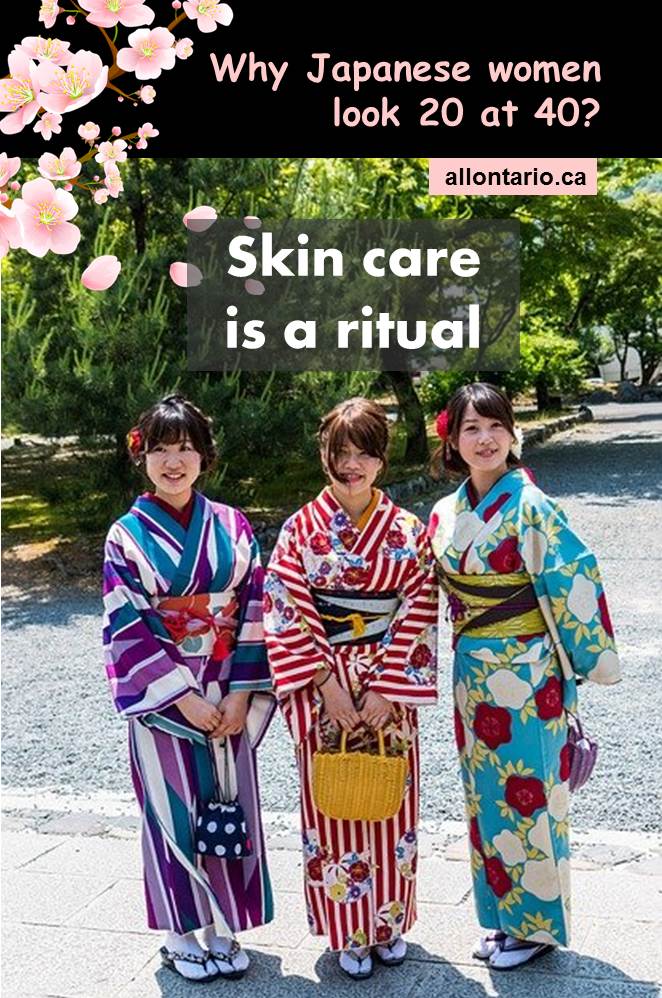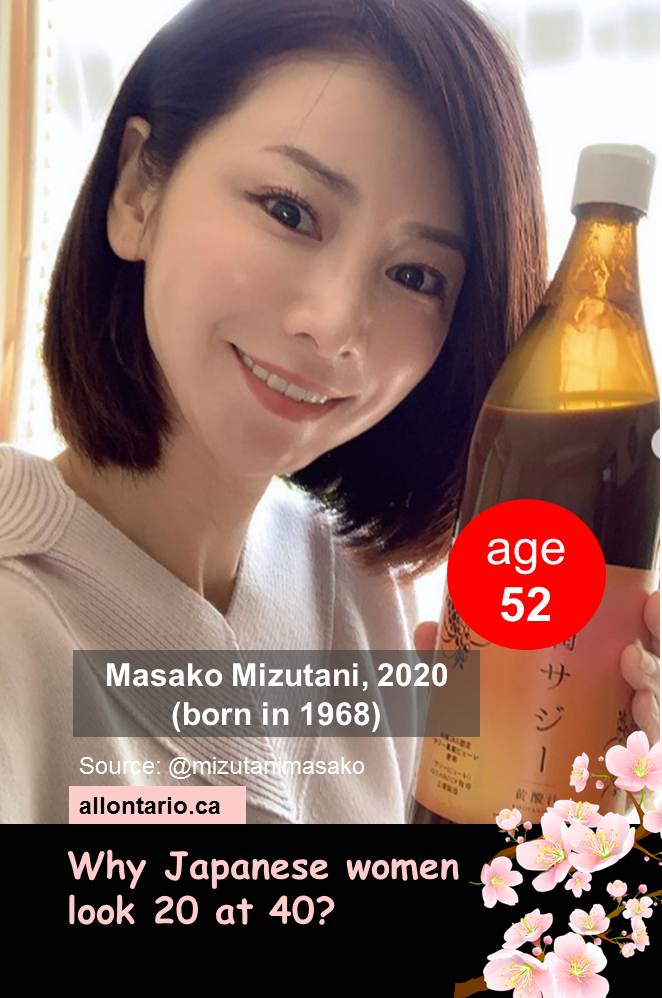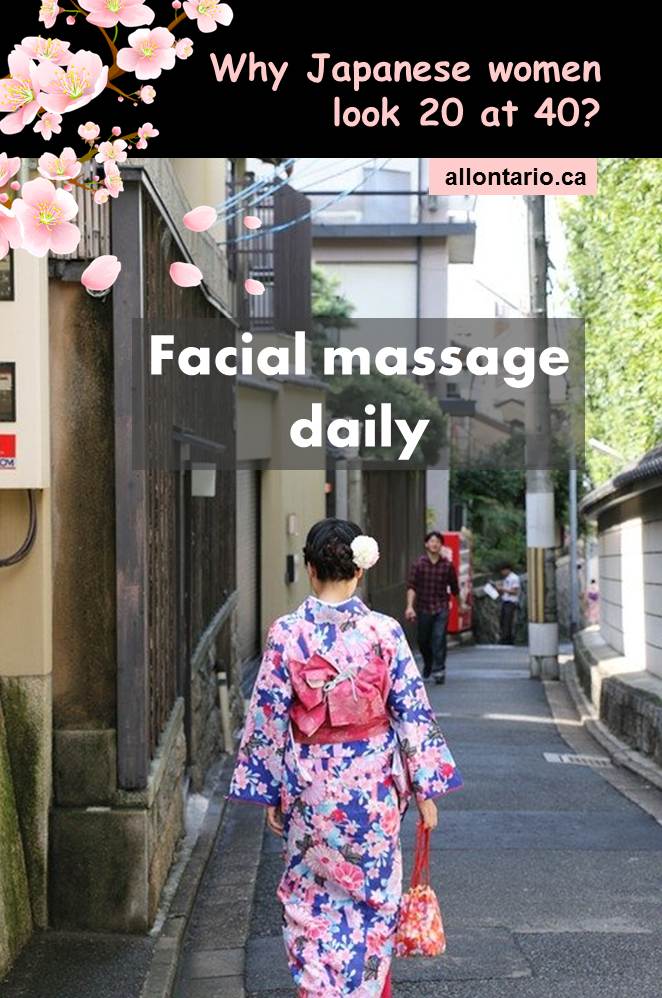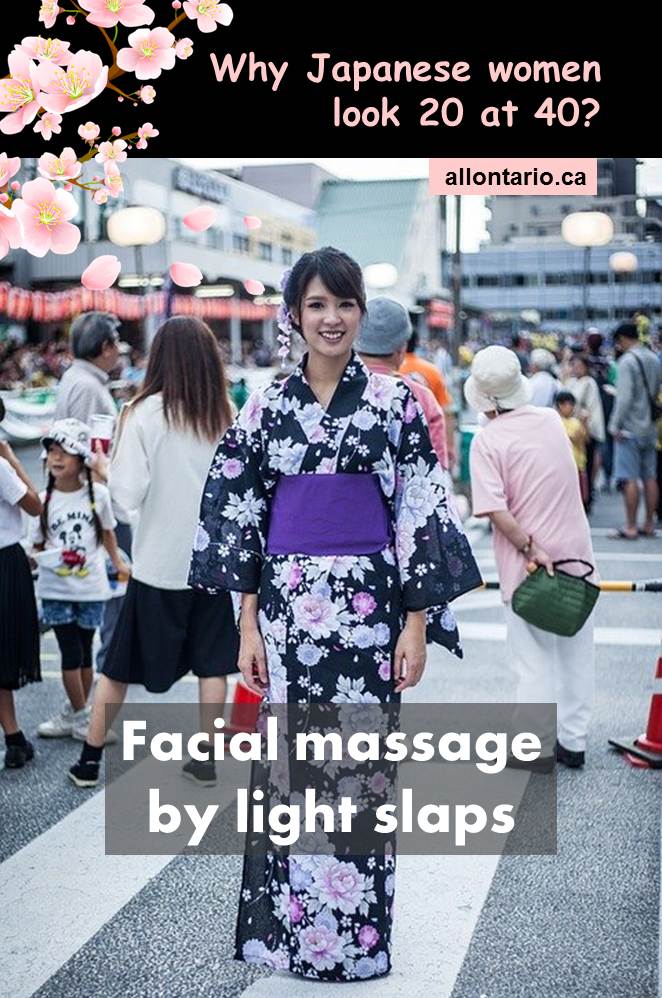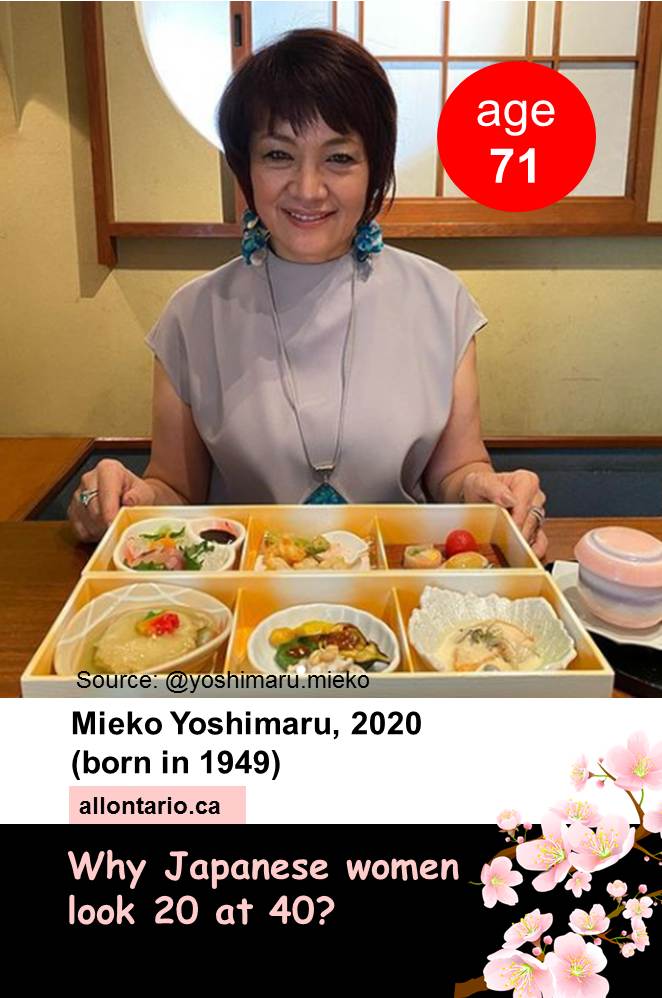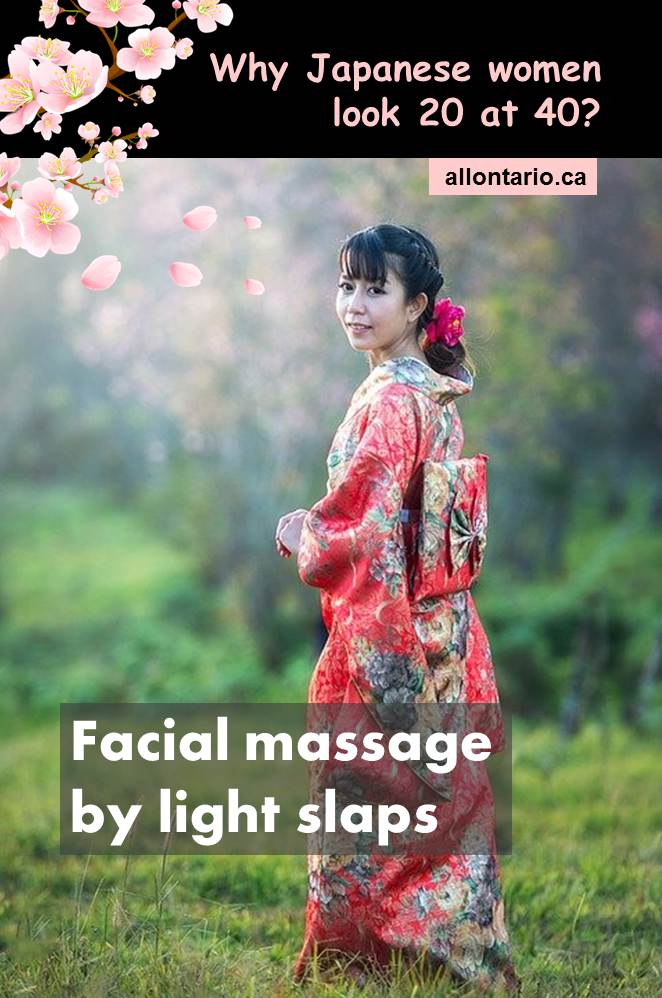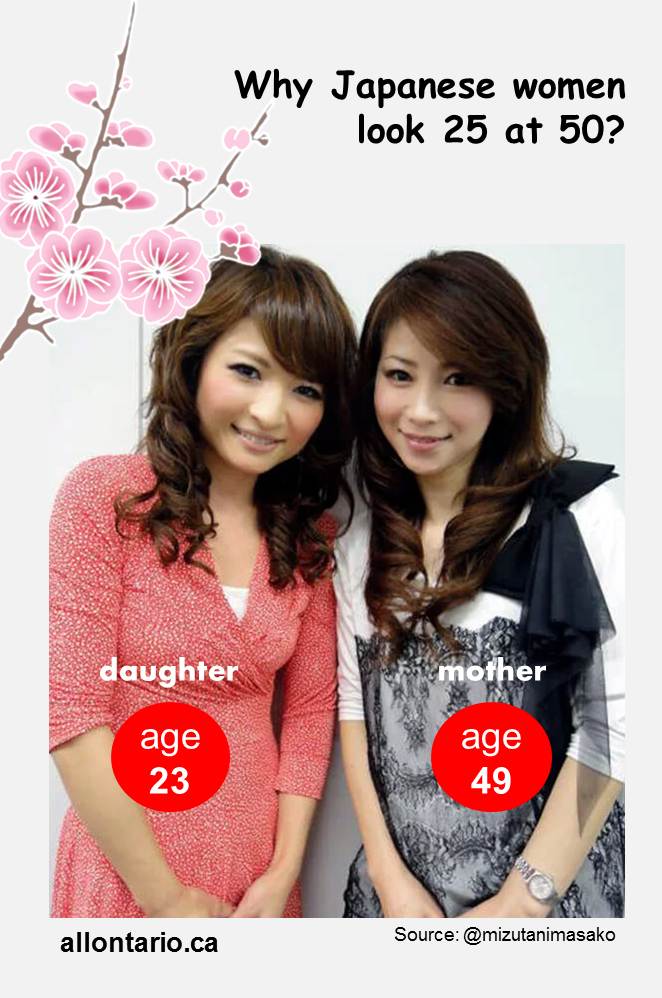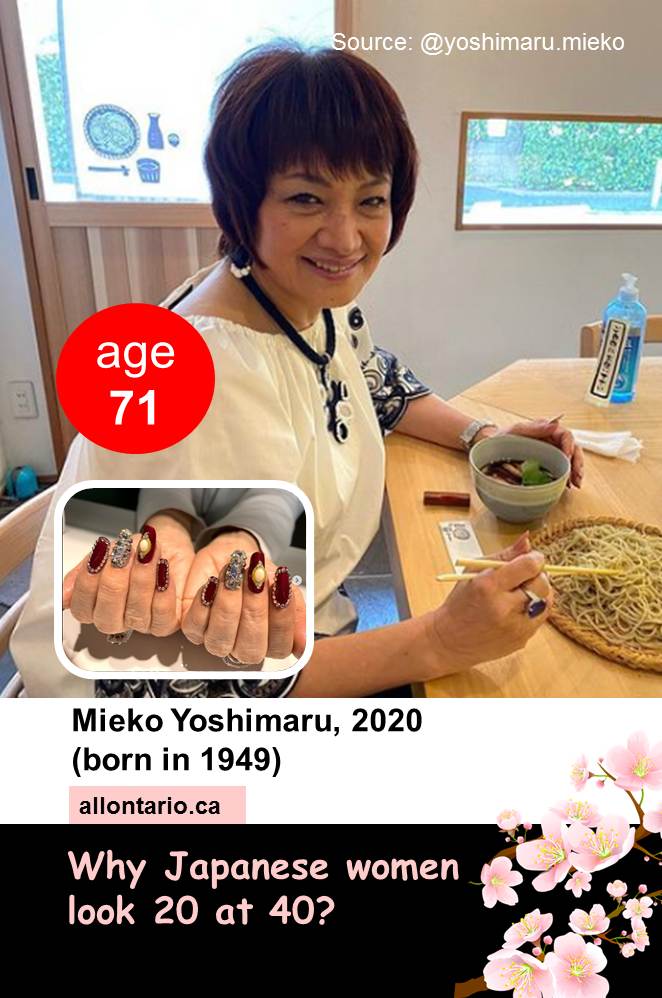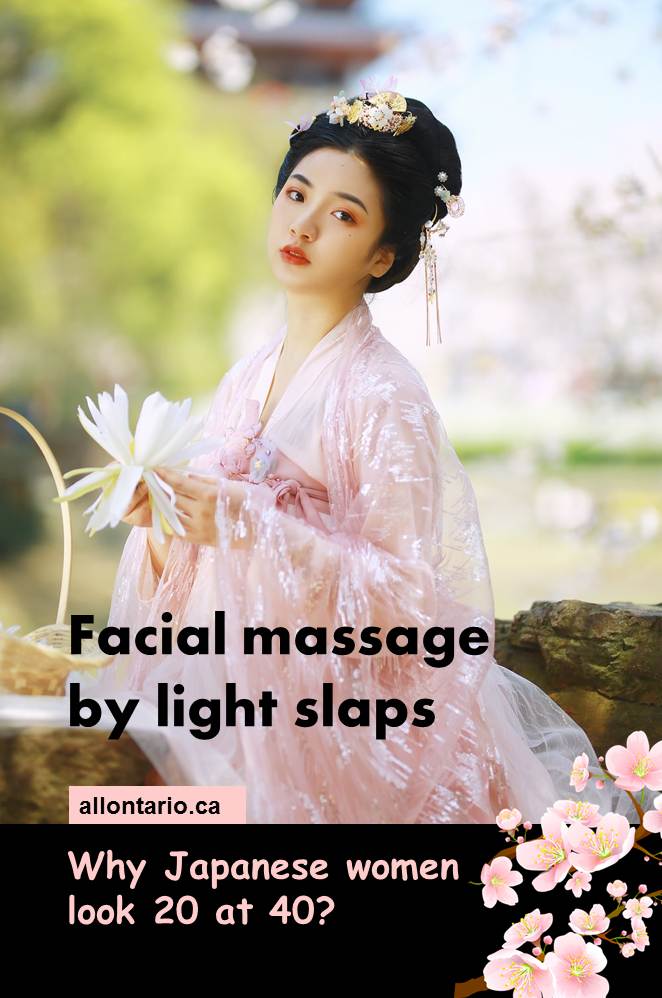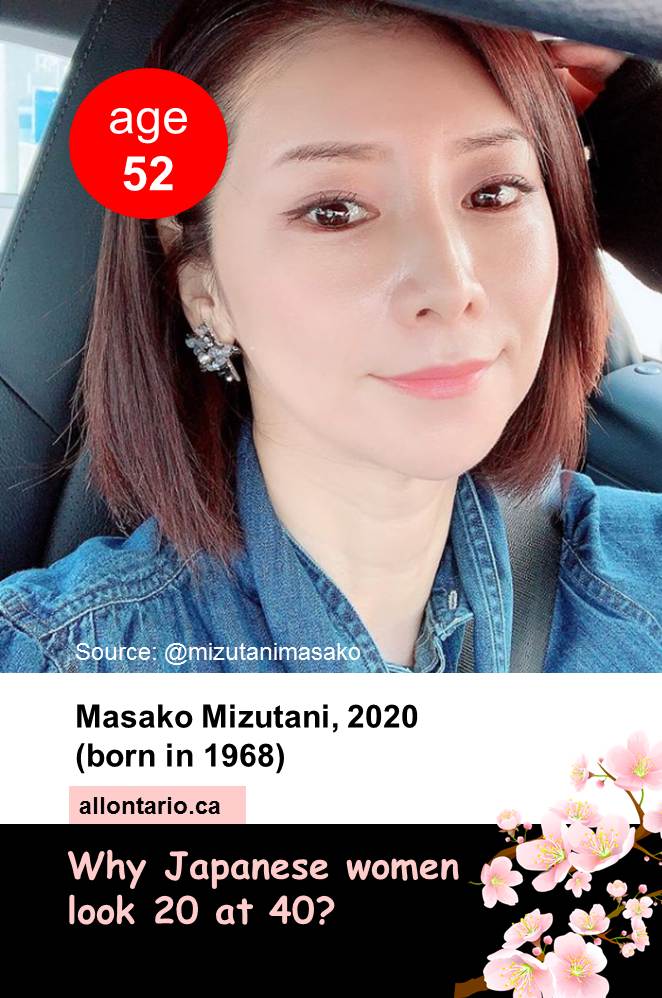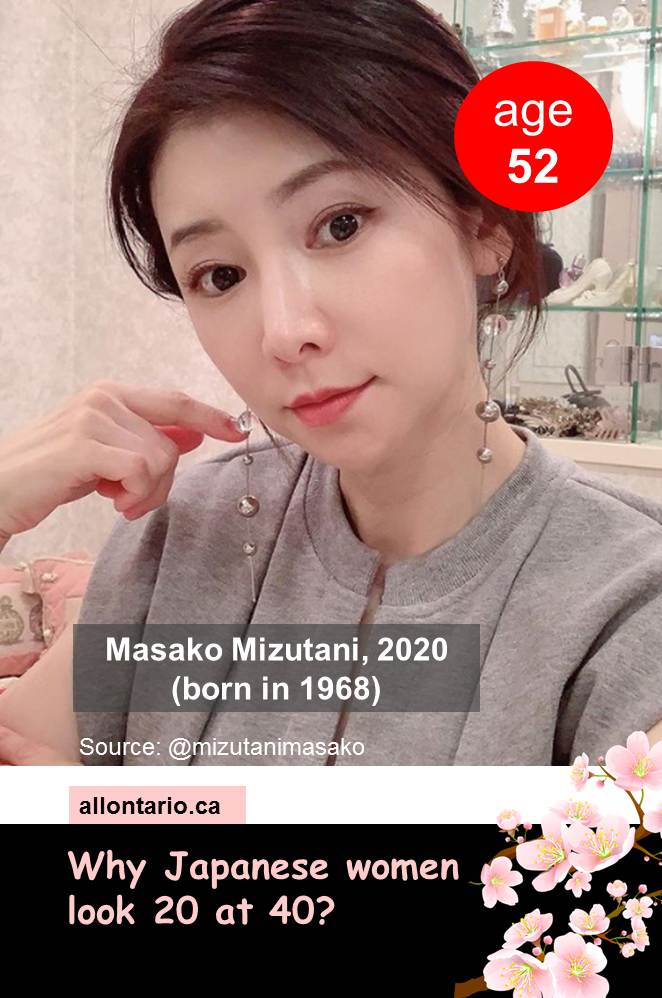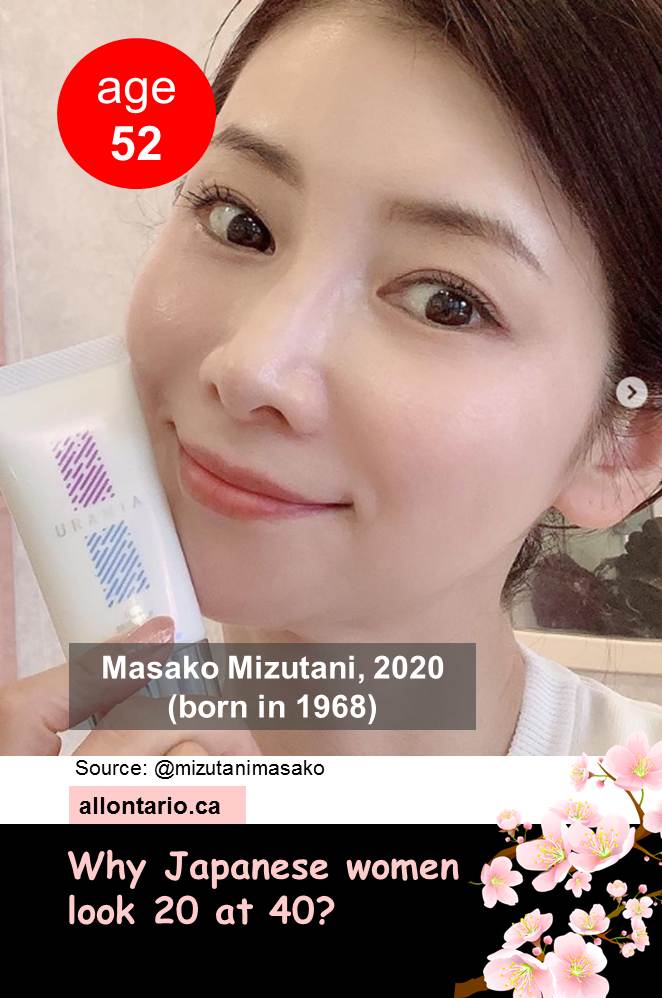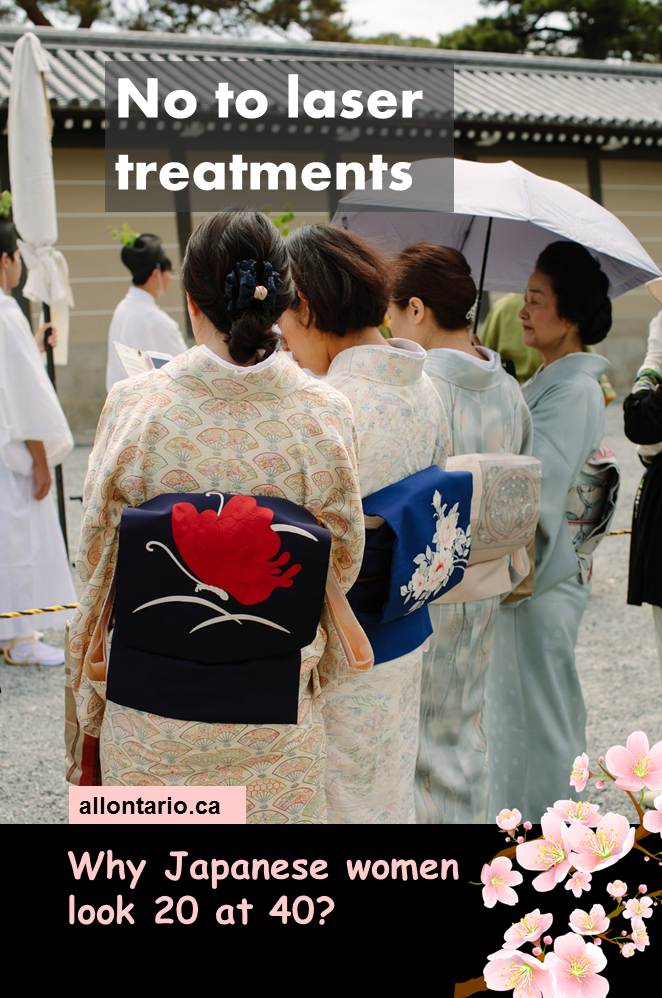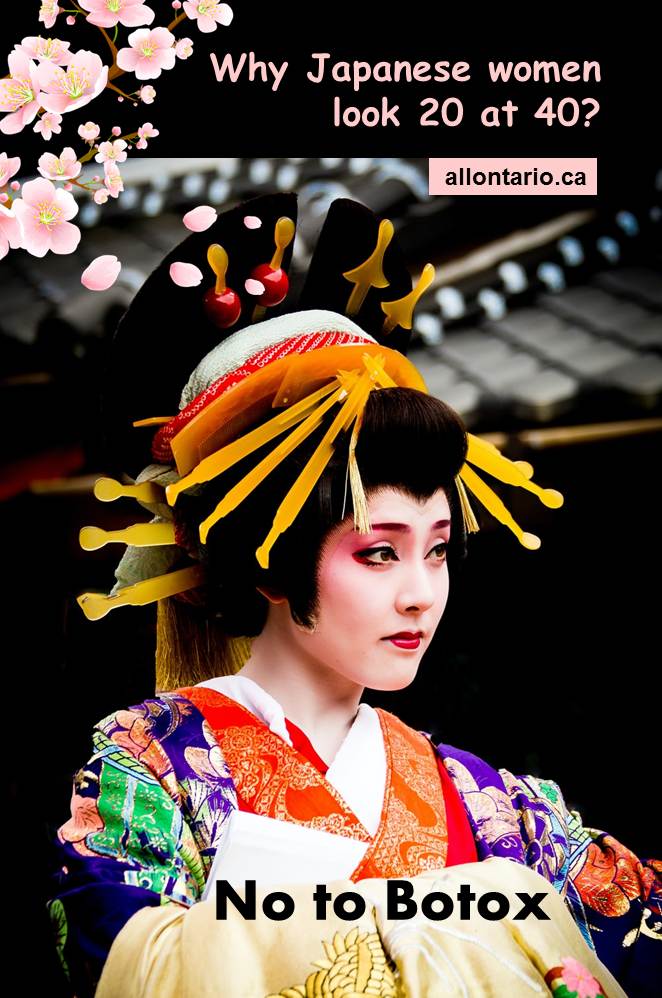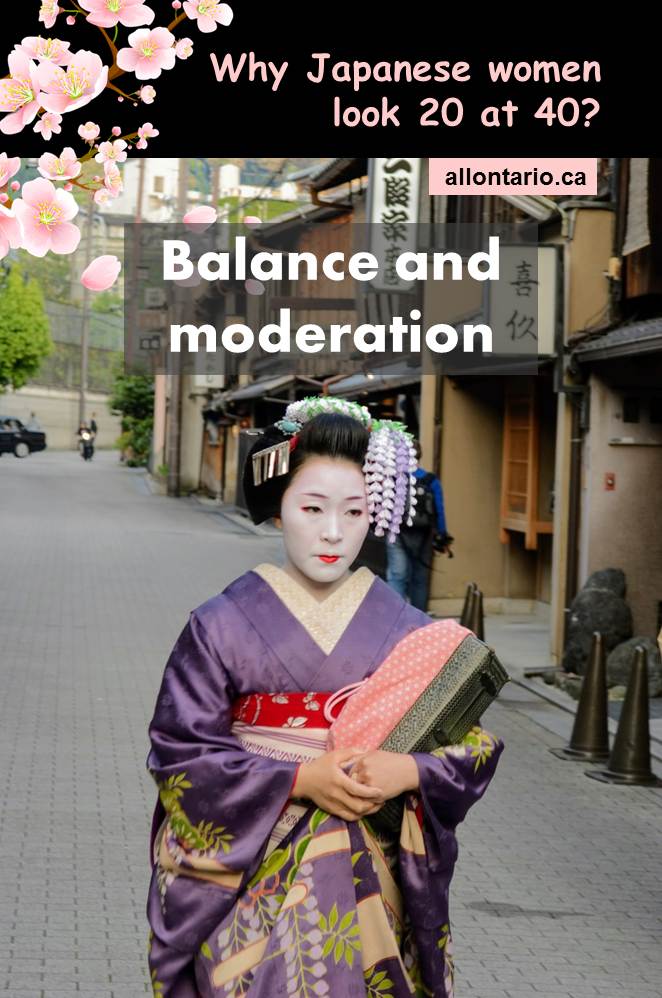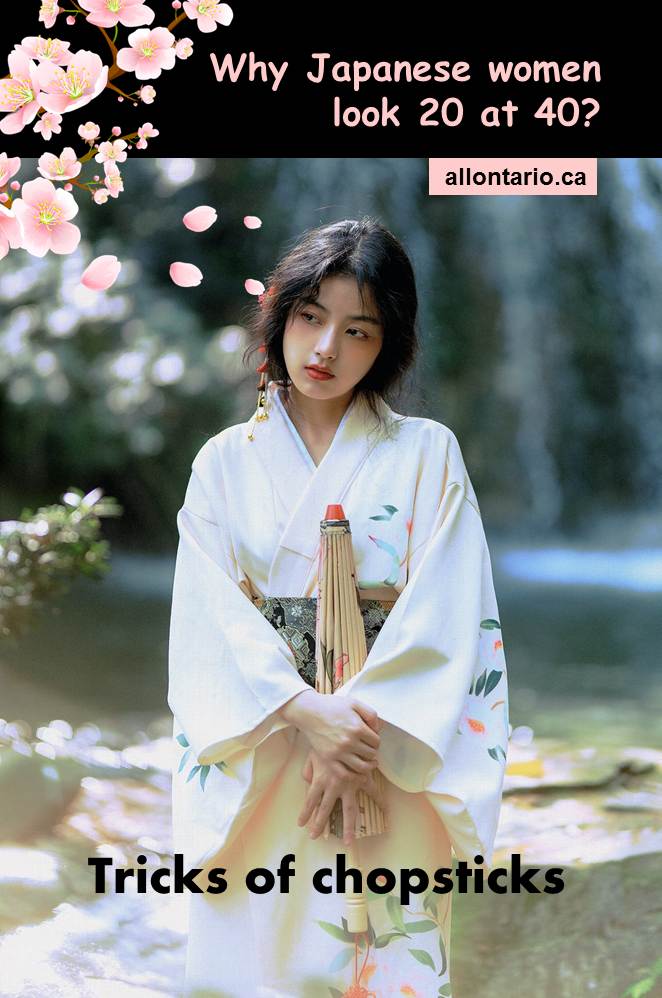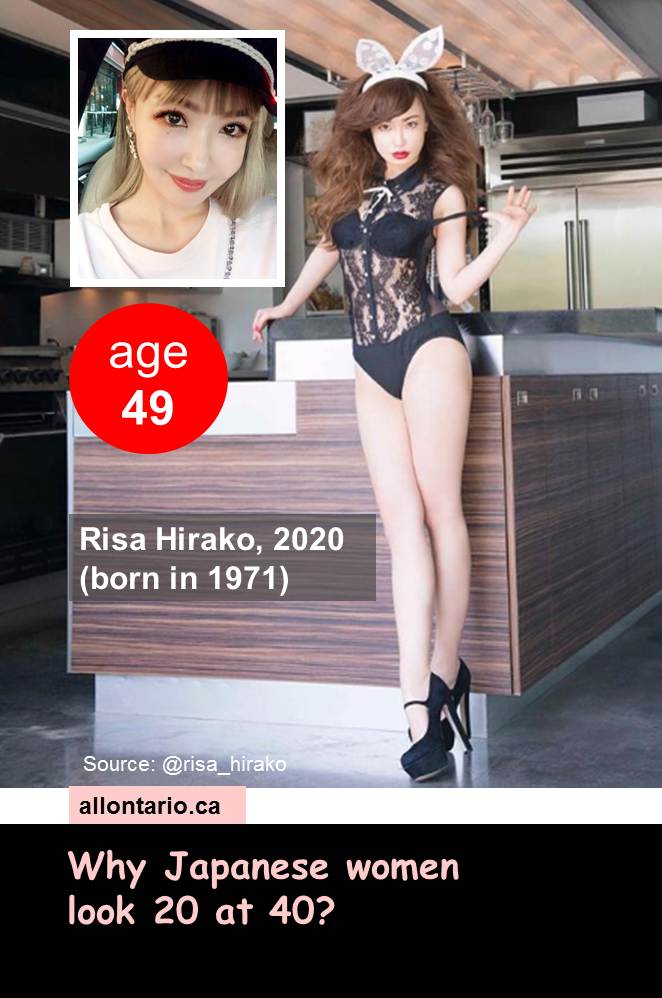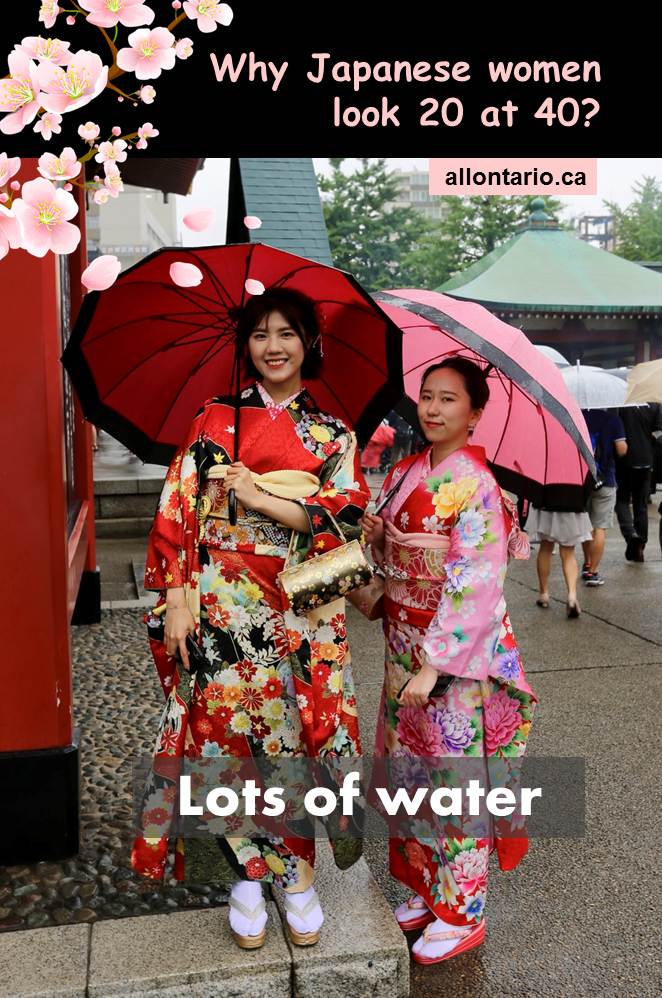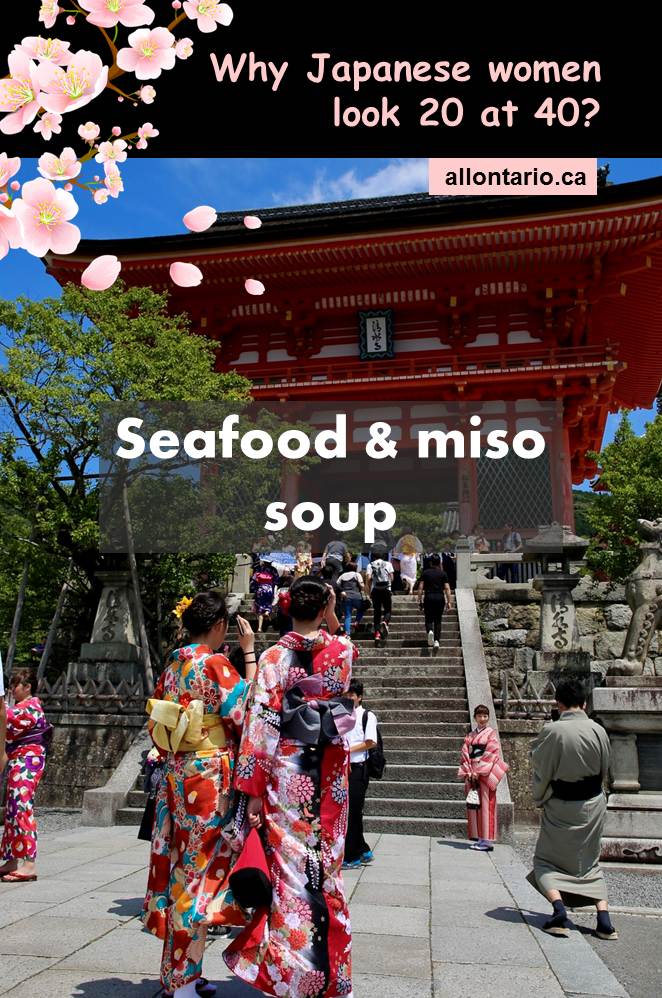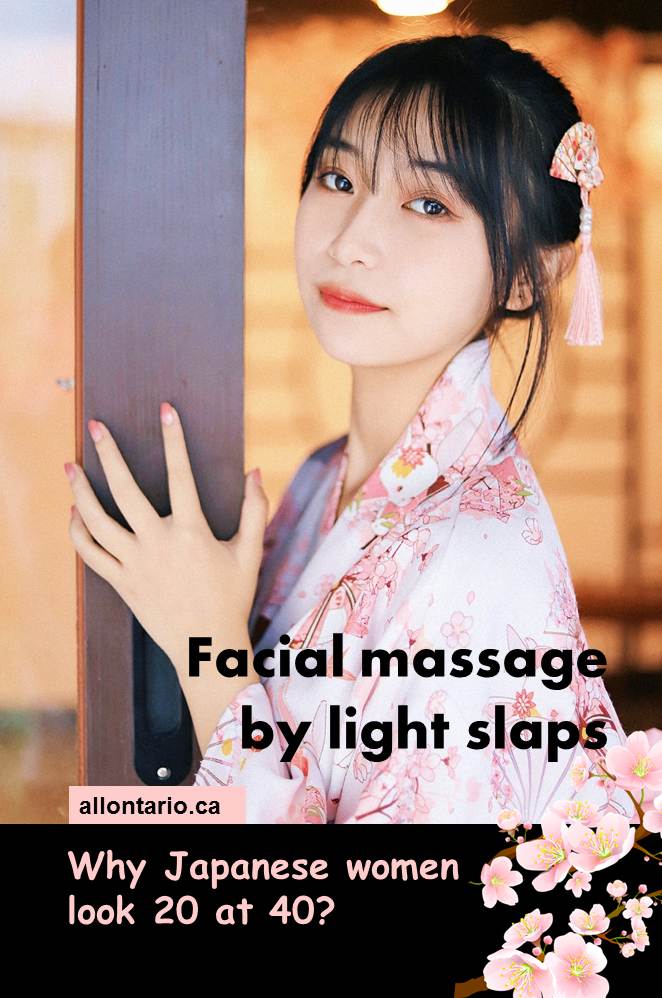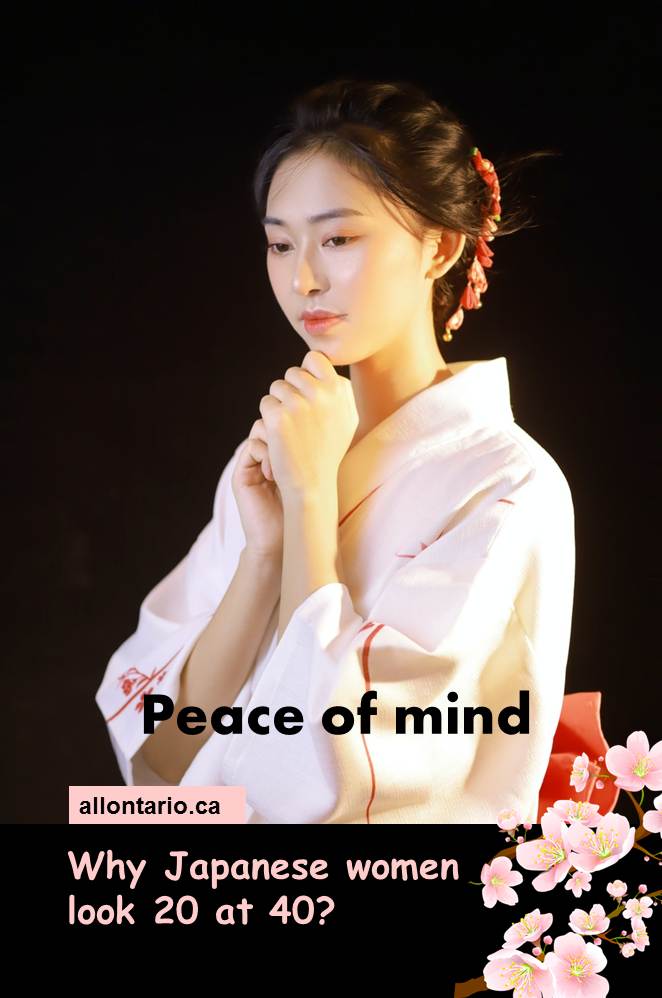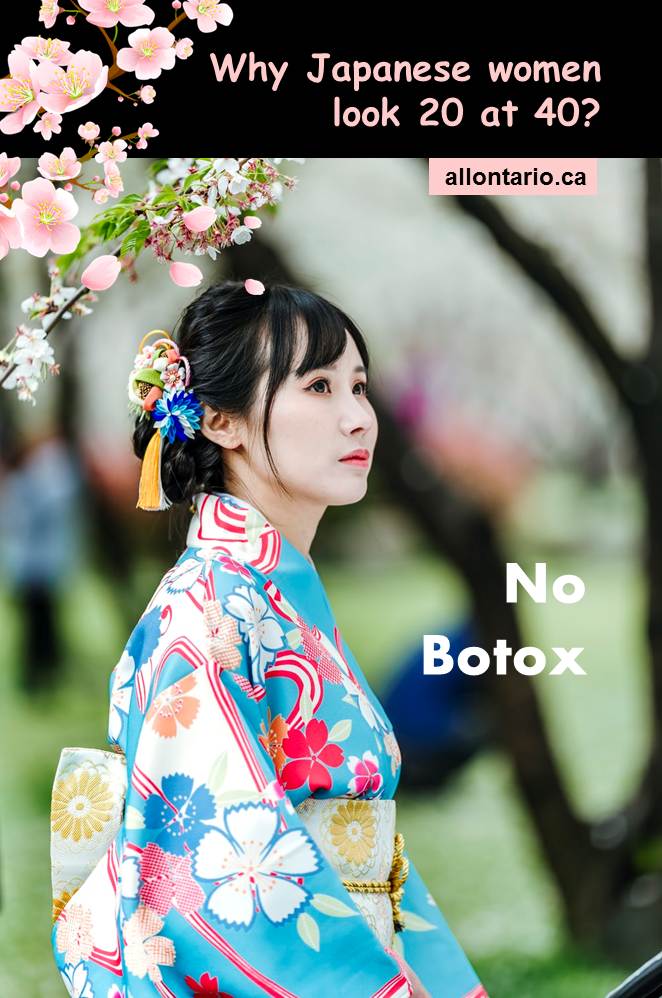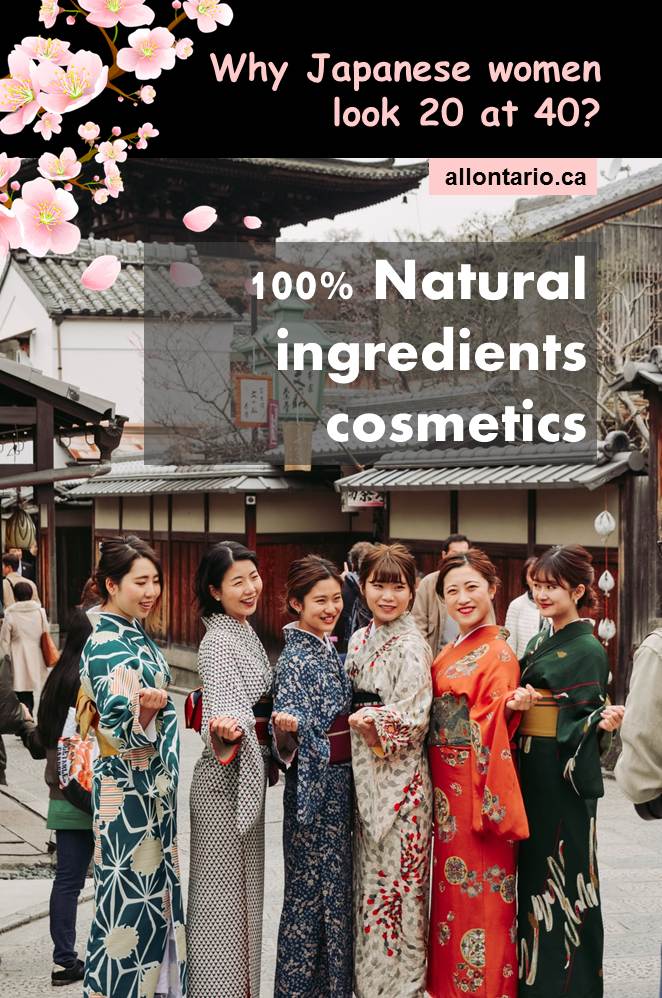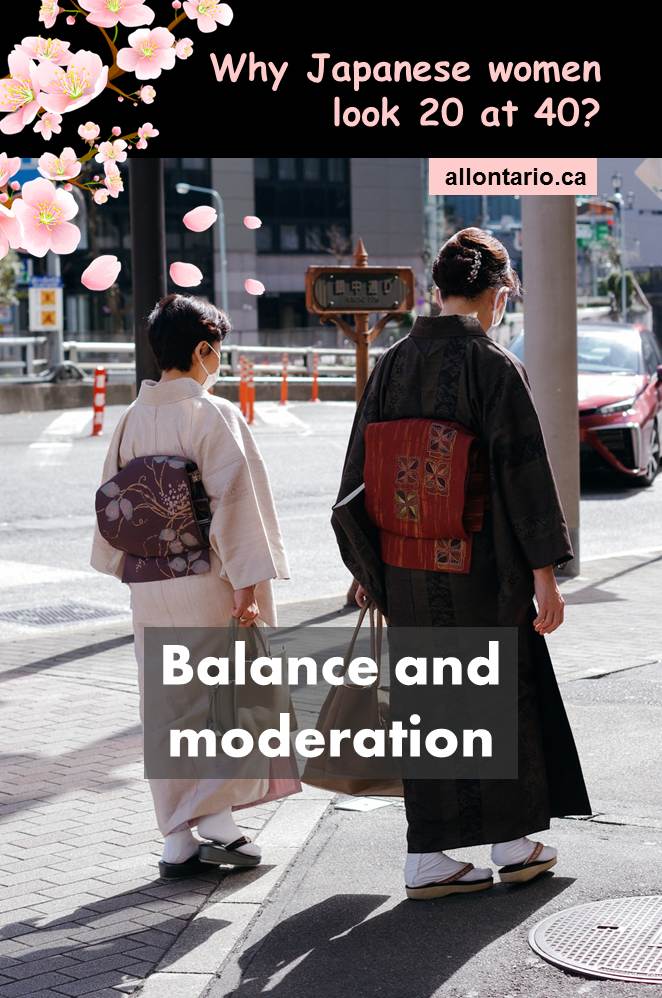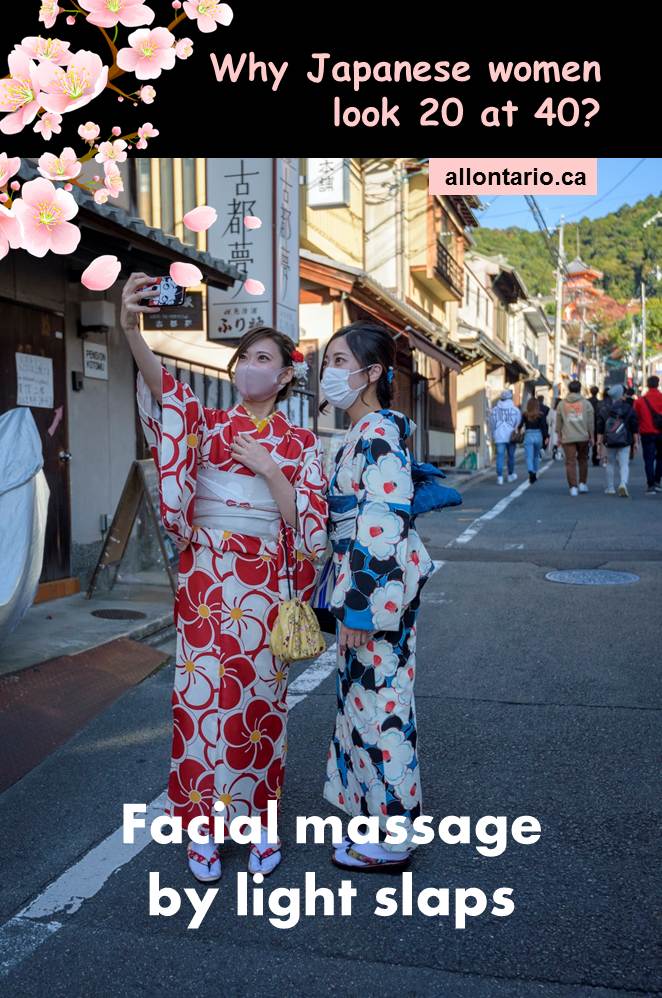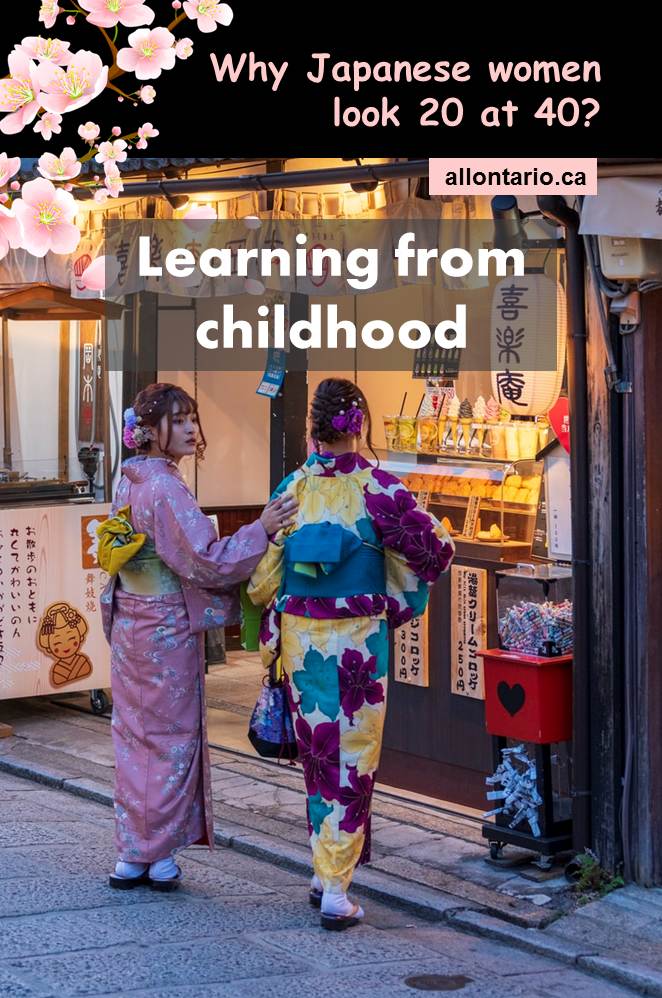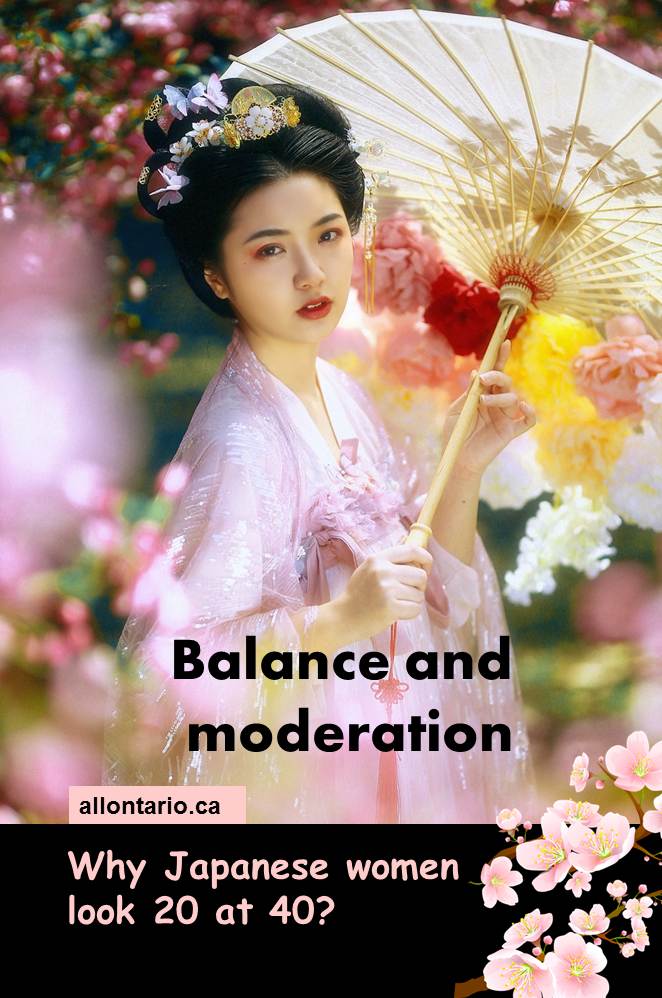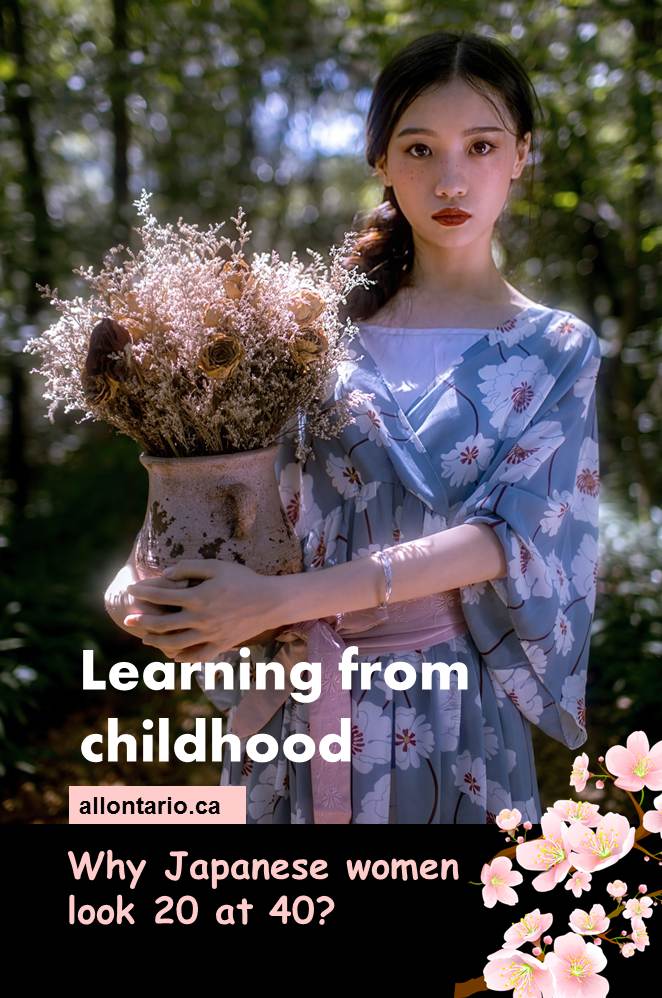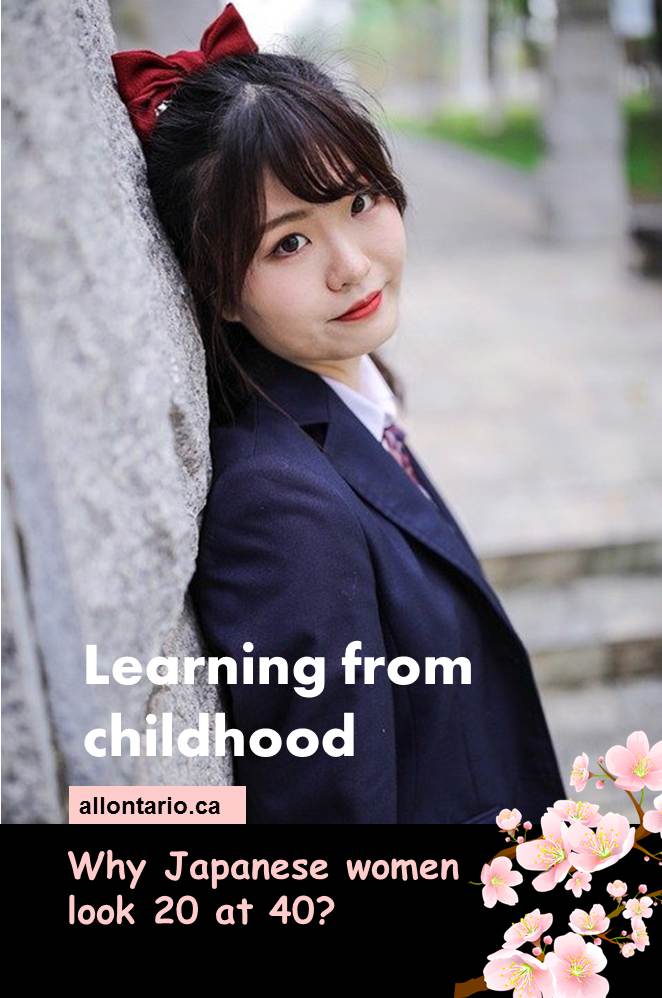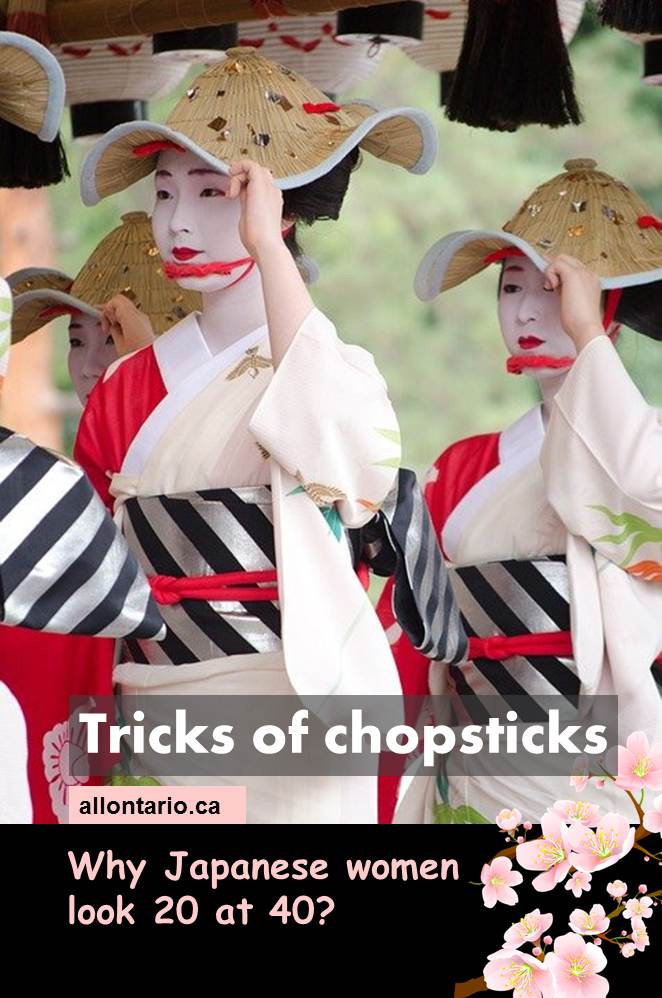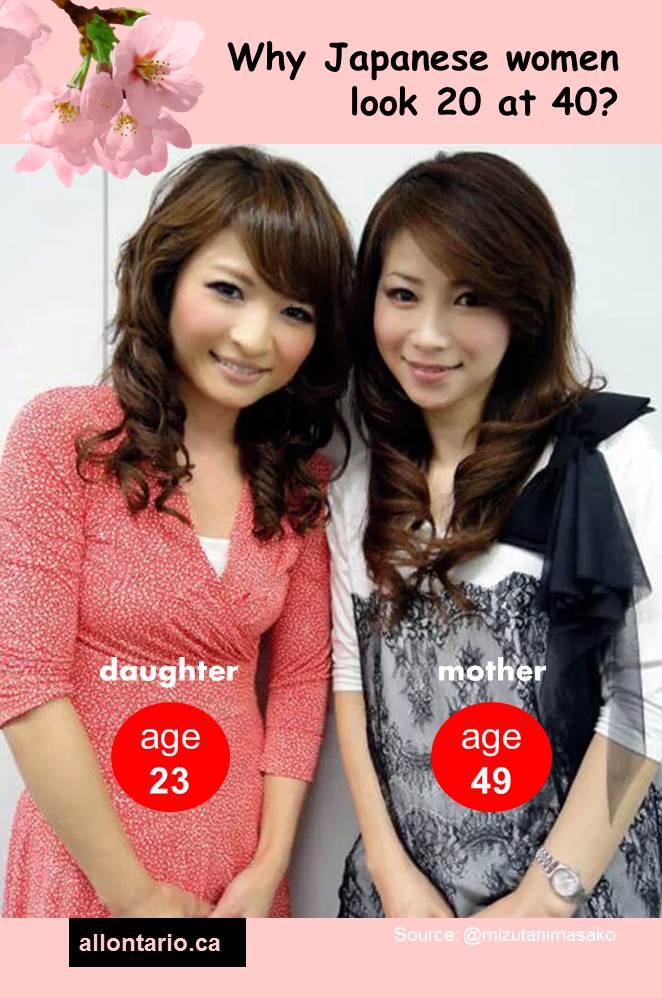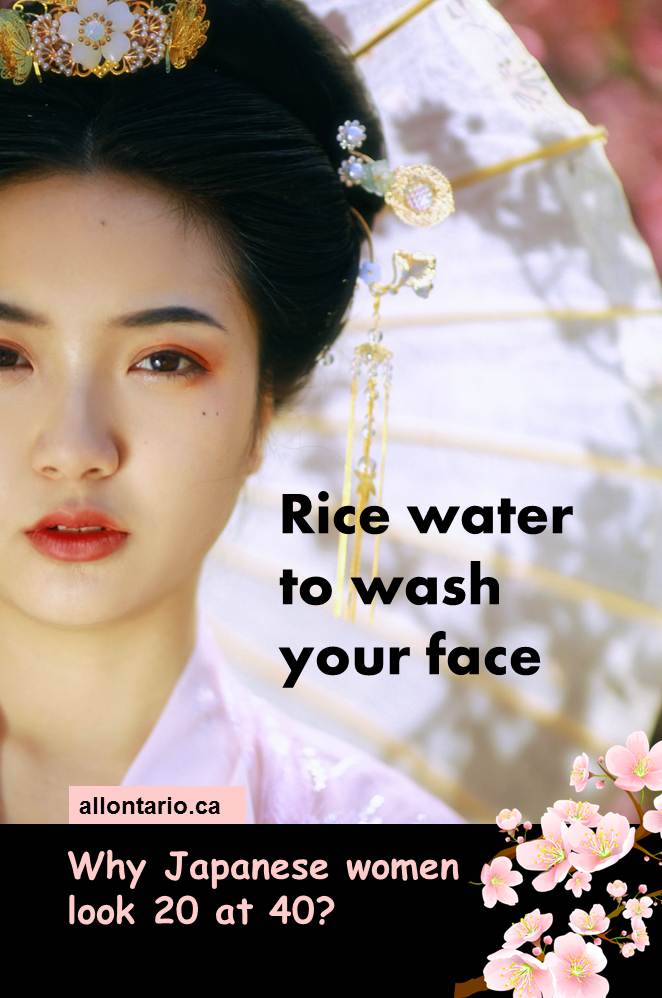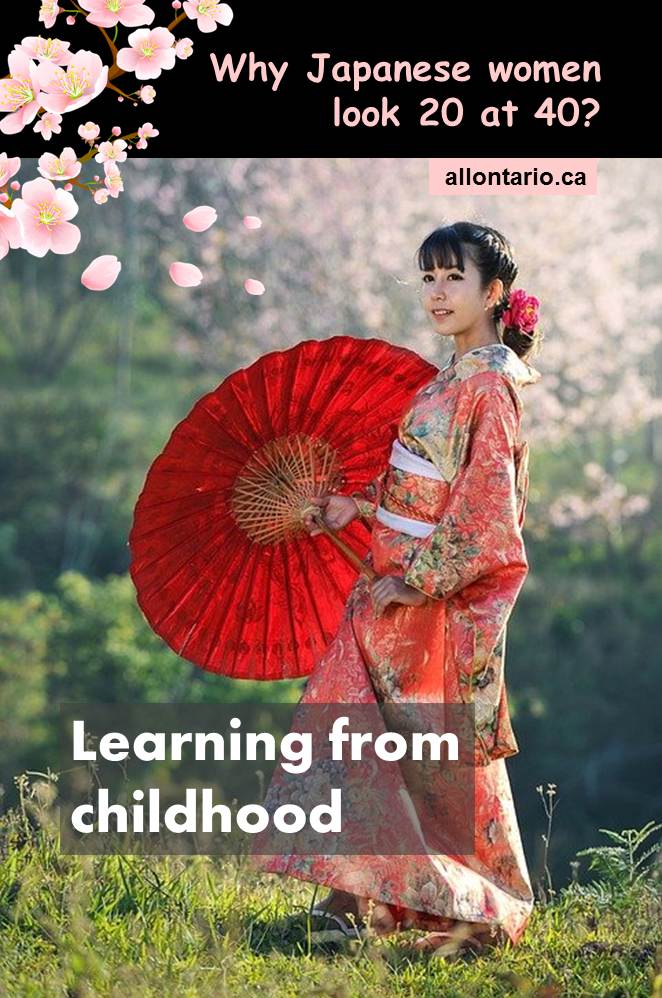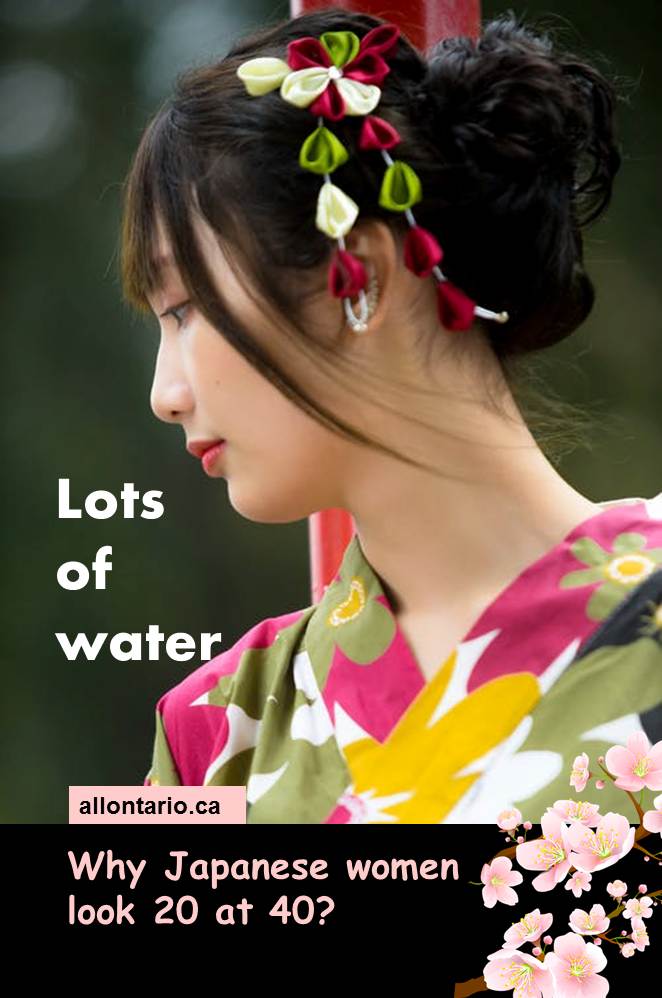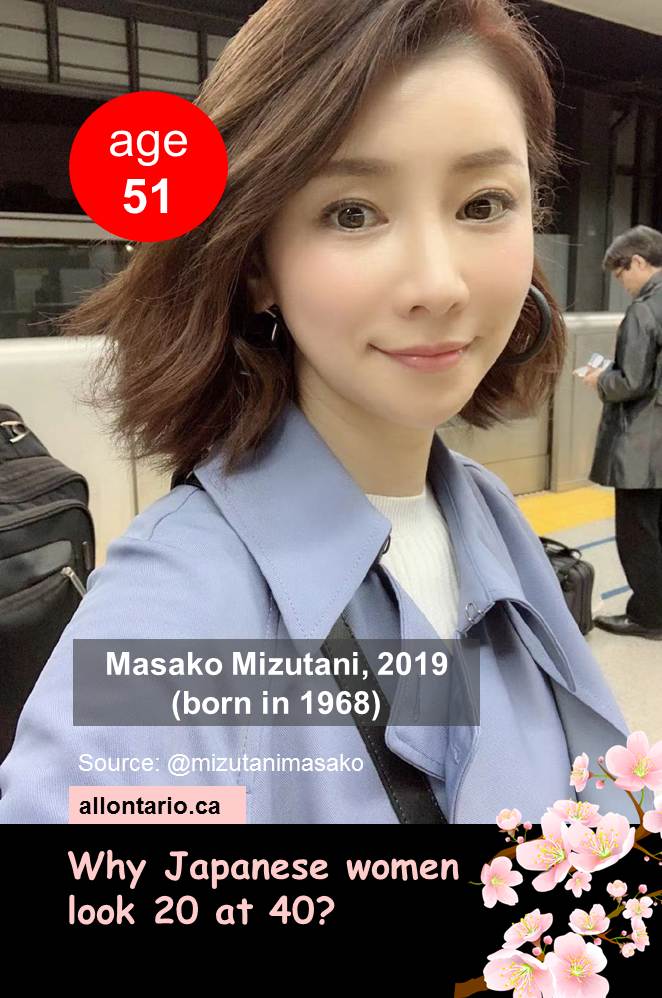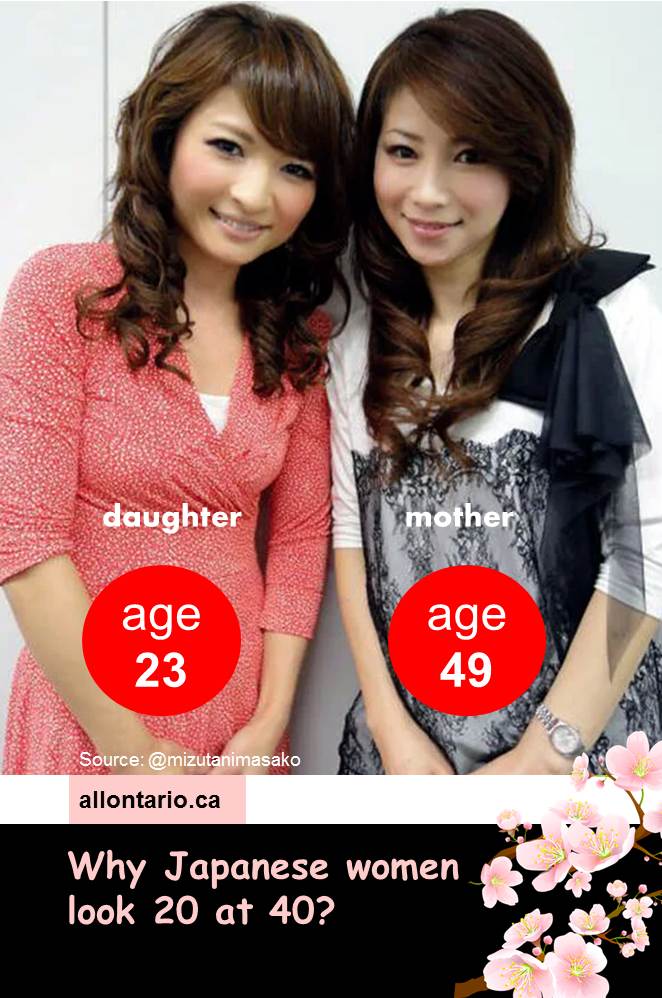The age of a Japanese woman can only be determined by the number of grandchildren! How do Japanese women manage to look 20 at 40 and 30 at 50? They are not aging?
Of course, they do, but the fact that the women of the Land of the Rising Sun retain their youth much longer than other women in the world. It’s a scientifically proven fact.
Okay, forget about science! Just take a look (and a very good one) at the pictures below.
 Take a look at this photo and try to determine: where is the mother, and where is the daughter?
Take a look at this photo and try to determine: where is the mother, and where is the daughter?
Take your time.
…………………..
Confused? The girl in the pink dress is the daughter. She was born in 1992. And the girl in the black and white dress is her mother. Masako Mizutani. She was born in 1968. And at the moment she is 49 years old. Do you believe it? Neither do we!

Masako Mizutani (born in 1968)
Masako is a former model and a mother of two. Now she does not work and maintains her blog where she talks about self-care. In her homeland she is called “Lady of Eternal Youth”. What’s the secret? Masako spends about 5 hours a day on skin care. In addition, she drinks a lot of water, gets enough sleep, doesn’t smoke and uses a cream with vitamin E.
And now, here are three more unbelievably young and very beautiful Japanese women.

Mieko Yoshimaru (born in 1949)
Mieko Yoshimaru (born in 1949) is a mother of two. At 51, Mieko Yoshimaru opened a beauty school, where she teaches her method of keeping the face and body young. More than a million people have taken a beauty course at her school. In Japan, 15 books and 7 discs have been published with recommendations and secrets of this amazingly young-looking woman, despite her real age over 70 years.

Risa Hirako (born in 1971)
Risa Hirako is a Japanese fashion model and singer. She is a charismatic model and a star in her late forties. She looks simply unrealistically young in the pictures, while she says that she hardly processes her photos. Risa uses cosmetics with natural ingredients only, eats healthy food, and loves honey, bananas and chocolate. In general, there are many centenarians in Japan, and one of the reasons for this is their dietary habits: they generally eat less meat, fat and sugar than people of other developed countries.
Mieko Yoshimura (born in 1951)
Mieko Yoshimura is former governor of Yamagata Prefecture, Japan. She was elected on January 25, 2009. At her mid-sixties she looked as 45
And now we are ready to talk about:
How to look 20 at 40 – beauty secrets of Japanese women
You think it’s enough to switch to seafood and rice and – voila! – age will disappear from the face, and the figure will return to the form of a 20-year-old girl? It’s a little bit more complicated.
Thanks to the special care and lifestyle, the Japanese woman maintains elastic skin and a toned appearance. For Japanese women, self-care is an art. They don’t save money and time on beauty. Starting from 20, every day, oriental beauties undergo a standard series of cosmetic procedures, making them a daily habit and an obligatory ritual.
 So, first, Japan has a high standard of living. Secondly, Japanese women love themselves. And, finally, Japanese women sacredly observe three rules:
So, first, Japan has a high standard of living. Secondly, Japanese women love themselves. And, finally, Japanese women sacredly observe three rules:
- they eat only healthy natural food
- exercise on a regular basis
- take good care of their physical appearance from a young age.
Remember, lasting beauty is a lifestyle, not a project, and alas there are no shortcuts.
Learning from childhood
The philosophy of proper nutrition Japanese women is taught from childhood. As soon as a child enters kindergarten or preschool, they begin to accustom her (and him) to healthy natural food. Great care is taken to ensure that they eat everything. Nutritionists are very gently expand the child’s diet. For example, out of two not-so-favorite foods, they suggest choosing one and eating half of the serving. Moreover, on a monthly basis, the parents of a student receive a nutrition table from a nutritionist, which describes in detail what foods and in what quantity their child needs to eat.
Protection from the sun
Japanese women protect their skin from the sun at any time of the year. While we are trying our best to get a tan and darker, Japanese girls have a ban on the sun.
Japanese women very carefully protect their skin from exposure to ultraviolet radiation – one of the main enemies of skin youth. Nothing ages more than the habit of sunbathing. A Japanese woman does not neglect high-quality sunglasses, wears a hat with brims and clothes that cover the cleavage.

Japanese skin care secrets
Skin care is a ritual
Skin care for Japanese women is a real ritual, an important stage of which is multi-stage cleansing.
- Multi-stage cleansing: They start from using gels for surface impurities and makeup removal. After that, soap foam is applied to the face, which gently but deeply cleanses the skin. At the next stage, the serum is applied with blotting movements. The care is completed with a closing agent – gel, milk or gel-structure cream. It protects the skin and retains moisture in it.
- Leave-in masks: Japanese women are very fond of leave-in masks that are applied at night and act on the skin for 10-12 hours.
- No mechanical scrubs: Japanese women prefer not to use mechanical scrubs but they love peeling.
- Warm hands: Warm hands when caring for your skin are a must. Before touching your skin or applying anything to it, you need to rub your palms and warm your fingers and only then do what you need.
- Facial massage by light slaps: Cleansing and moisturizing the skin is often combined with a light facial massage: its regular use improves blood flow and activates the skin’s natural regeneration processes. Never rub your skin, try light slaps instead – this is another good way to improve circulation.
- Natural oils: Japanese women often use natural oils for skin care, making the only exception for mineral oils (they clog pores and cause inflammation). Oils do not make oily skin greasy, instead, they rather effectively dissolve other oils (makeup, sebum, sunscreen) and thus wonderfully cleanse pores.
- Makeup-free day: Japanese women don’t wear makeup once a week to give their skin a rest. On this day, they only use cleansers and moisturizers which is incredibly good for the skin.
- Rice water: Geishas as well as many other Japanese women wash their faces with boiled rice water (room temperature) that helps with the skin elasticity and gradually lighten the complexion. It’s an old trick used to keep their skin bright and fair. Even if you are not a geisha, you can do the same.
- If you can’t eat it, don’t put it on your face: From generation to generation, Japanese women consider beauty simple, natural and edible. If you can’t eat it, don’t put it on your skin – is their golden rule and well learned habit. As skin is porous, anything you apply on it will be absorbed within minutes and end up in our blood stream.
100% Natural ingredients cosmetics
Japanese women use cosmetics with natural ingredients only. In their formulas, Japanese cosmetics manufacturers skillfully combine natural ingredients with the latest achievements in science. Therefore, Japanese cosmetics contain practically no preservatives. As a basis, manufacturers most often use an extract from pork or horse placenta, peptides or plant extracts. But, despite such a tender love for everything natural, the Japanese woman is unlikely to make masks from cucumbers or strawberries. Japanese girls treat such “folk” recipes with great caution, because they don’t know how many pesticides, hormones and other chemicals are there.
Skin care products from the same line
And one more interesting point: on the dressing table of a Japanese woman, you will never see an assorted set of lotions, serums and creams – all products should be from the same line. This is due to the fact that any Japanese skin care complex is developed taking into account that each subsequent component enhances the effect of the previous one.
No to Botox and plastic surgeries
This fact is really surprising: Japanese women are extremely negative about mechanical scrubs, Botox and other fillings injections, laser treatments and plastic surgeries! First, it’s expensive. Secondly, Japanese women consider such methods too aggressive for the body. Instead, most of the inhabitants of the Land of the Rising Sun prefer to enhance the resources of their own body with the help of natural remedies, both from the outside, using deep penetration cosmetics based on placenta and peptides, and from the inside, healthy eating and taking supplements.
Massage is the most popular treatment in beauty salons
The most popular procedure in Japanese beauty parlors is massage, especially Yukuko Tanaka’s Anti-Aging Massage. At her 63, this Japanese lady developed a series of facial massages that can make your skin look much younger in only two weeks. It is a massage which fights wrinkles quickly and tightens the skin. The massage stimulates the lymph glands, thus speeding up the discharge of toxins and excess fluids from the face. It will reduce wrinkles, lift the face, prevent and improve sagging skin, will reduce pore size, black heads and white heads and will get rid of puffy eyes and under-eye bags. This Japanese facial massage can basically rejuvenate you. However, you’ll need to do this every day without any breaks.
Hot bathing
What is admired in the Japanese is their respect for their culture and skillful use of the gifts of Mother Nature. Due to volcanic activity, there is a huge number of hot springs in Japan. Bathing in such a spring has enormous benefits for health and beauty.
 Japanese women love bathing and turn it into a long ritual. They try to visit hot springs once a week and this tradition has been a custom for a long time. They relax in water with nourishing oil applied to the face. The body and face are steamed, and then peeling products and obligatory massage are used, and at the end – ablution and moisturizing of the skin. Thanks to this procedure, the body is saturated with minerals, the blood circulation improves, and the night sleep becomes healthier. It allows you to get away from stress, improve overall well-being, and preserve youth and beauty.
Japanese women love bathing and turn it into a long ritual. They try to visit hot springs once a week and this tradition has been a custom for a long time. They relax in water with nourishing oil applied to the face. The body and face are steamed, and then peeling products and obligatory massage are used, and at the end – ablution and moisturizing of the skin. Thanks to this procedure, the body is saturated with minerals, the blood circulation improves, and the night sleep becomes healthier. It allows you to get away from stress, improve overall well-being, and preserve youth and beauty.
Busy Japanese women are replacing natural hot spring bathing with a hot bath with aromatic salts and oils, which also has a beneficial effect on the condition of the body and skin.
Enough night sleep
No matter how much we would like to ignore this point and look for various excuses (I don’t have enough time / I come home from work late / Do I have right to watch TV? …), without enough sleep you can’t even dream about the beauty of your skin. Japanese women go to bed relatively early, if we compare this with Western habits: at 11 pm most of them are already asleep. But they get up at dawn. Masako Mizutani, for example, is already preparing breakfast for the family at 5.30 am.
However, going to bed early is not a panacea. You also need to sleep properly. Ideally – on the back, so that no creases form on the face, and on the chest – ugly folds and sagging in general. Many Japanese women use night applications under the eyes, special serums, and masks.
Peace of mind
A cheerful woman grows old much later: she does not have the habit of making a squeamish or displeased face. The gloomy expression on the face becomes a habit from day to day and lays mournful folds, drooping corners of the lips, and ptosis. Japanese women are surprisingly balanced. Of course, it’s primarily a feature of education from childhood, but why don’t we follow their example?
Drinking water
Japanese women drink water on an empty stomach after waking up and throughout the day. Those who look after their health and beauty refuse any drink with ice and cold water. Even in the heat, they save themselves with sips of warm water or tea ceremony.
Japanese five elements food philosophy
Japanese diet is based on the Five Elements Philosophy stating that each of five elements – earth, water, fire, wood, and metal – must be in a proper relation to every other element in order for the human beings to maintain their optimal mental and physical health.
- Five Colours: white, black, red, green and yellow
- Five Basic Tastes: sweetness, sourness, bitterness, saltiness, and umami. “Umami” can be described as savory and is characteristic of broths and cooked meats. People taste umami through taste receptors that typically respond to glutamates, which are widely present in meat broths and fermented products and commonly added to some foods in the form of monosodium glutamate. Since umami has its own receptors rather than arising out of a combination of the traditionally recognized taste receptors, scientists now consider umami to be a distinct taste.
- Five Cooking Techniques: meals may be raw, grilled, simmered, steamed, and deep-fried.
- Five Senses: taste, smell, touch, sight, and hearing. Japanese meals are perfectly balanced. Food should not only satisfy hunger, but also should be enjoyed, entertained and nourished with all five senses:
Japanese diet staples
Through a long culinary past, the Japanese have developed sophisticated and refined cuisine. In recent years, Japanese food has become fashionable and popular in the United States, Europe, and many other areas. Dishes such as sushi, tempura, noodles, and teriyaki are some of the foods that are commonly known.
The traditional cuisine of Japan is based on rice with miso soup, vegetables, mushrooms, fish, seaweeds, green tea and other dishes with an emphasis on seasonal ingredients. Side dishes often consist of fish, pickled vegetables, and vegetables cooked in broth. Apart from rice, staples include noodles, such as soba and udon. Japan also has many simmered dishes such as fish products in broth called oden, or beef in sukiyaki and nikujaga.
Seafood
As Japan is an island nation surrounded by an ocean, its people have always taken advantage of the abundant seafood supply. Seafood is common, often grilled, but also served raw as sashimi or in sushi. Seafood and vegetables are also deep-fried in a light batter, as tempura.
Miso soup:
In Japanese food culture, miso soup is a representative of soup dishes served with rice. Miso soup is based on a dashi stock (bone broth) into which softened miso paste is mixed.
- Dashi forms the base for miso soup, clear broth soup, noodle broth soup, and many simmering liquids to accentuate the savoury flavour known as umami.
- Stock forms the basis of many dishes, particularly soups, stews and sauces. Making stock involves simmering animal bones, meat, seafood, or vegetables in water or wine, often for an extended period of time. Some aromatics may be added for more flavour.
- Miso is a traditional Japanese seasoning produced by fermenting soybeans with salt and koji fungus and sometimes rice, barley, seaweed, or other ingredients. It is a thick paste used for sauces and spreads, pickling vegetables, fish, or meats, and, of course, for miso soup. High in protein and rich in vitamins and minerals, miso played an important nutritional role in feudal Japan. Miso is still widely used in Japan, both in traditional and modern cooking, and has been gaining worldwide interest.
In addition, there are many optional ingredients (various vegetables, tofu, etc.) that may be added depending on regional and seasonal recipes, and personal preference.
Soy Beans
Miso soup, edamame, tofu, and natto … The Japanese consume an average of 50 grams of soy per day compared to less than 5 grams for the average Westerner.
Cooking oil
Generally speaking, traditional Japanese cuisine is prepared with little cooking oil. A major exception is the deep-frying of foods. This cooking method was introduced during the Edo period due to influence from Western and Chinese cuisine, and became commonplace due to increased productivity.
Balance and Moderation
Since Buddhism arrived to Japan from China in the 6th century, the dominance of five colours – white, black, red, green and yellow – has been a tradition. The Japanese believe that these five colours have to be included in every meal. Indeed, this practice will help you serve balanced and healthy menu: white rice, black sesame seeds, red tomatoes, yellow omelet, and green beans boost the nutritional value of the dish. Each dish is served in modest-sized portion to ensure dining satisfaction.
Tricks of Chopsticks
If you’ve ever eaten with chopsticks, you know that they pick up much less food than forks and spoons. Smaller bites result in more efficient chewing and better digestion. But not only that: using chopsticks slows down the entire eating process tricking the brain by giving it time to realize that the stomach is getting full; therefore you eat less. However, you can finish one hamburger in a minute and still feeling hungry.
3% Female obesity rate
Have you ever seen a fat Japanese woman? Neither have we! Everyone who comes to Japan is surprised that they eat a lot there, but they don’t get fat. Primarily, it’s due to their diet. But what exactly? Here is a short overview:
- Lots of plant foods: The Japanese menu has a lot of seasonal plant foods (vegetables, legumes, and fruits), fish, seafood, cereals, in particular, very high quality rice. If the main course is served at the table, then there will be about 30% of meat or fish in it, the rest is vegetables.
- Cooking fast: The second, but not less important factor is that Japanese cuisine is fast food (doesn’t mean junk food). Cooking fast allows you to preserve the maximum amount of nutrients and vitamins in food.
- Less is sault and spices: In addition, salt and spices are little used in the cooking process. The dishes are complemented with light “seasonings” based on soy sauce and vegetable oils.
- Lots of fiber: The daily ritual is an additional intake of a serving of fiber. Coarse dietary fiber is sold in Japan as dry powders that have to be diluted with water.
Japanese women are some of the most weight-conscious in the world. The female obesity rate in Japan is about 3%, compares to 36% in USA, 23% in the UK, 24% in Australia, and 14% in Germany.
Longevity of Japanese people
The Japanese diet consists principally of rice; fresh, lean seafood; and pickled or boiled vegetables. The healthy Japanese diet is often believed to be related to the longevity of Japanese people. In the lists of countries by average life expectancy at birth in 2018, Japan takes the second place in the world (after Hong Kong): overall – 84.5 years; female – 87.5 years; male – 81.1 years.
Finally, the last but not least secret of Japanese women: sleep on your back and imagine yourself as beautiful, young and healthy woman.
